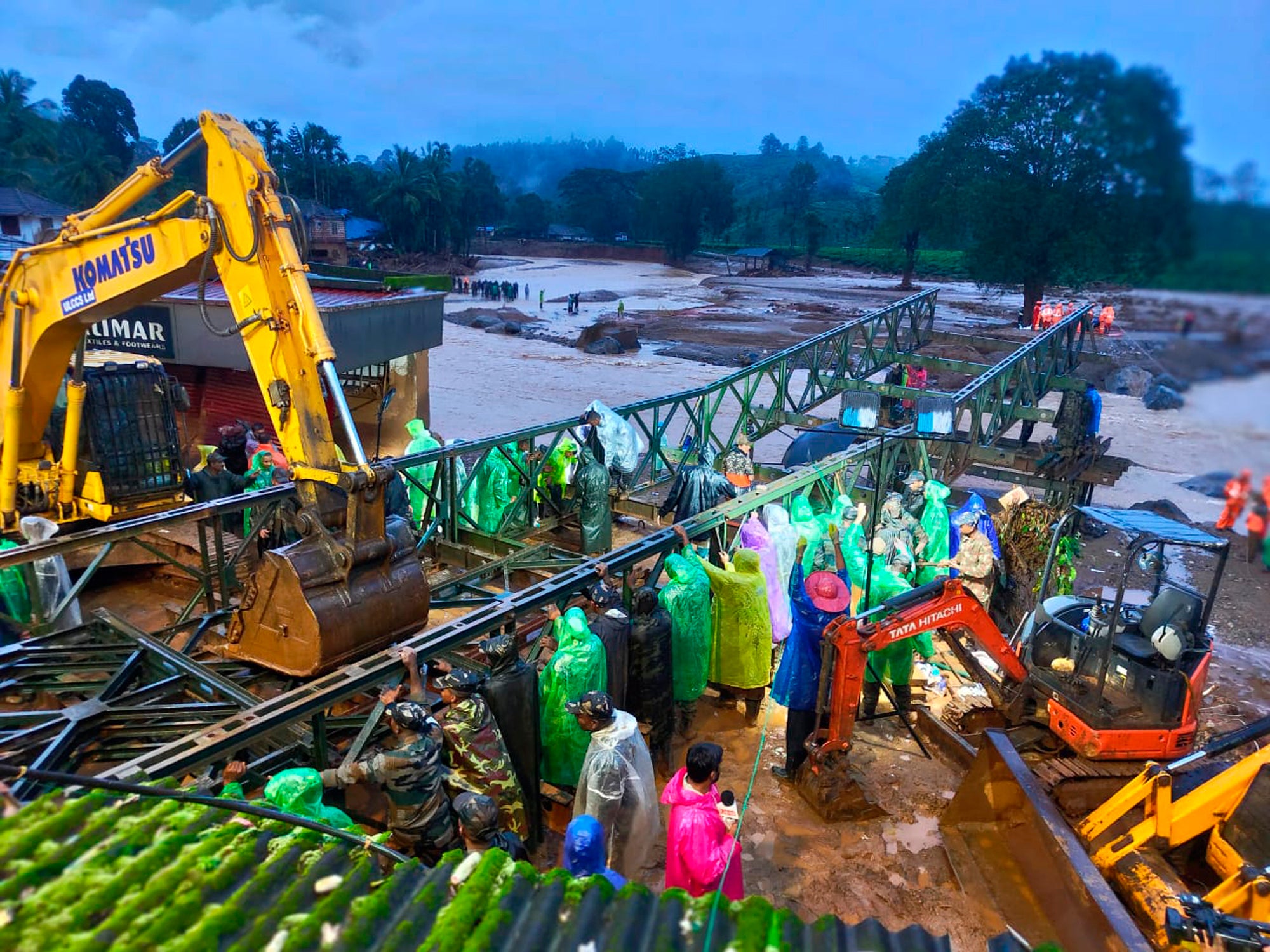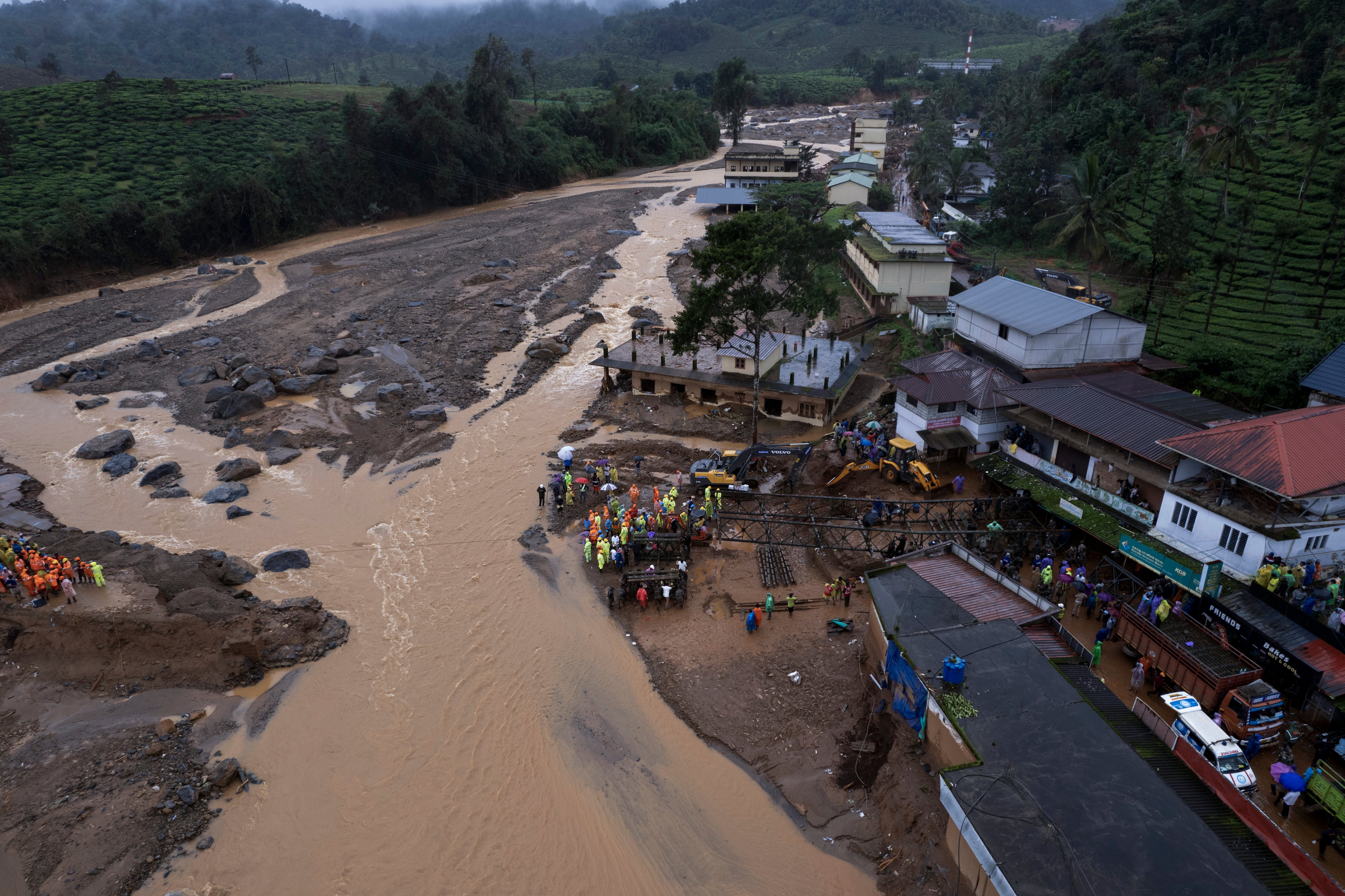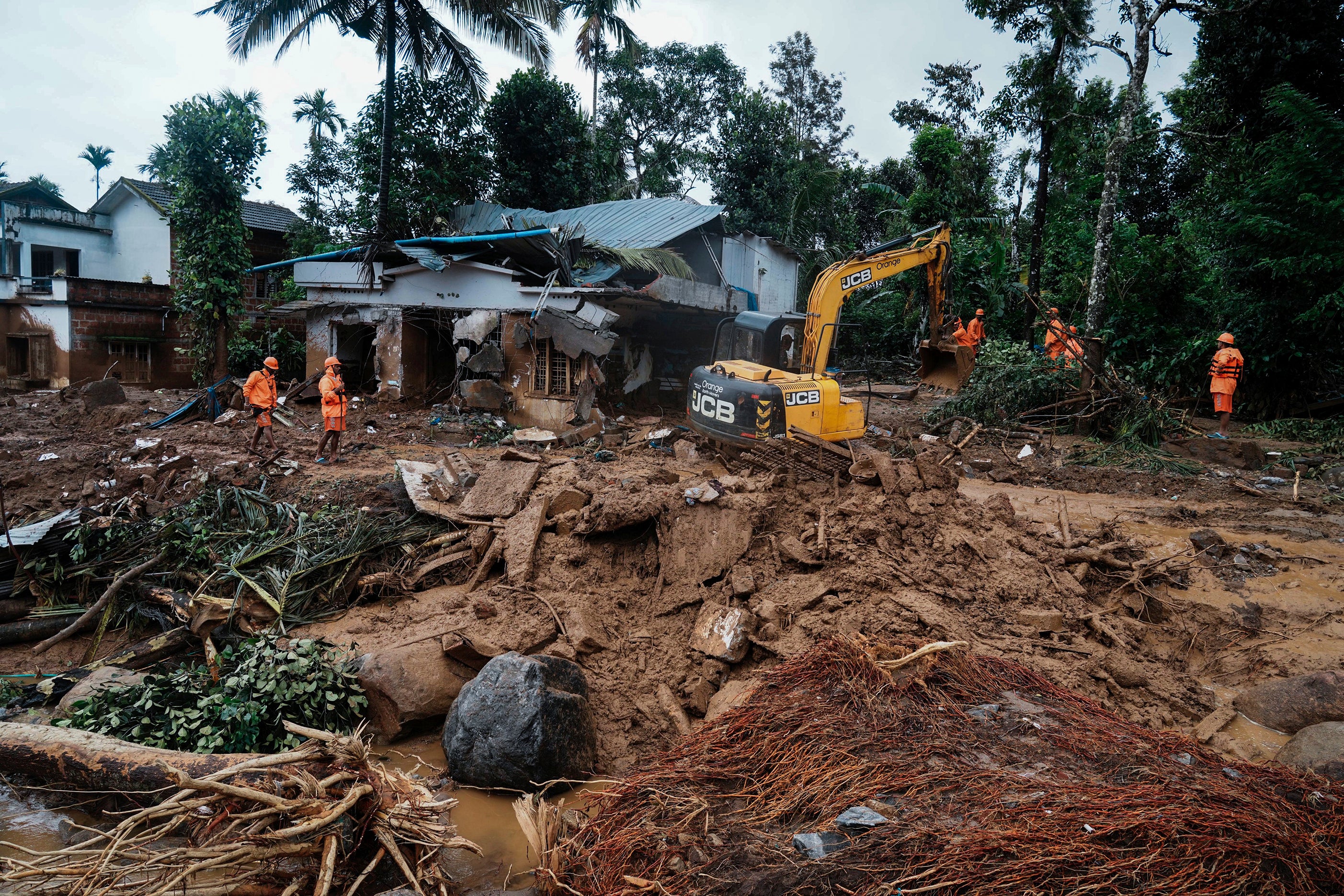Could scores of deaths in Kerala landslides have been avoided?
Landslides in Wayanad killed over 300 people and wiped out entire villages
Your support helps us to tell the story
From reproductive rights to climate change to Big Tech, The Independent is on the ground when the story is developing. Whether it's investigating the financials of Elon Musk's pro-Trump PAC or producing our latest documentary, 'The A Word', which shines a light on the American women fighting for reproductive rights, we know how important it is to parse out the facts from the messaging.
At such a critical moment in US history, we need reporters on the ground. Your donation allows us to keep sending journalists to speak to both sides of the story.
The Independent is trusted by Americans across the entire political spectrum. And unlike many other quality news outlets, we choose not to lock Americans out of our reporting and analysis with paywalls. We believe quality journalism should be available to everyone, paid for by those who can afford it.
Your support makes all the difference.More than 300 people were killed and entire villages wiped out after landslides caused by heavy rainfall struck Wayanad in the southern Indian state of Kerala earlier this week, sounding alarm all over the country about the growing frequency and intensity of such disasters.
Heavy rainfall, flooding and landslides are common during South Asia’s monsoon season from June through September, but they have grown more destructive in recent years, in large part because of human activities.
Kerala’s case is illustrative. Though the occurance of the flooding and landslides was beyond human control, the extent of the disaster was not.
The first landslide hit Wayanad an hour past midnight on Tuesday. The villagers of Meppadi, Mundakkai and Chooralmala ran for their lives. Many of those who stayed were buried by landslides that followed one after the other until early dawn.
“We thought the entire mountain was going to fall on us. We were fighting death that time,” a villager identified only as Jayesh told India Today.
The proximate cause of the disaster was unrelenting monsoon rain. The Indian Meteorological Department said Wayanad had received 28cm of rain in the 24 hours before the landslides struck and destroyed critical infrastructure like roads, bridges and power lines along with homes and crops.
Kerala is no stranger to intense moonsoon rainfall given its geography, flanked by the Arabian Sea to the west and the Western Ghats mountain range to the east. But this monsoon has been particularly severe, leading to swollen rivers, landslides and extensive flooding in the southern state as also elsewhere in the country.
Studies have shown that the climate crisis is making the monsoon particularly harsh, with rain falling in short and heavy bursts.
"Climate change is drastically altering rainfall patterns in the region," said Dr Akshay Deoras, a researcher at the National Centre for Atmospheric Science.
“What was once a predictable monsoon season has become increasingly erratic, with long dry spells followed by sudden, intense downpours."
This shift heightens the risk of floods and makes landslides more likely as dry soils are unable to absorb heavy rains effectively, he explained.

The rainfall is also not distributed equally. While rainfall in Kerala’s nothern Kannur district was 21 per cent above average between 1 June and 30 July, it was 14 per cent below average in neighbouring Wayanad and nearly 25 per cent below average in Idukki and Ernakulam.
“The co-occurence of two extreme scenarios, landslides and rainfall deficit, in the same state reflects a strong spatial variability in this year’s monsoon rainfall,” Dr Deoras said.
“The expectation is that such a pattern would become more intense in the future if global warming continues.”
Kerala was devastated by Cyclone Ockhi in 2017 and again by massive floods in 2018, among the worst in its history.
What Dr Deoras described isn’t unique to Kerala. It’s a global phenomenon driven by rising temperatures and shifting climate patterns.

The Indian Ocean, a critical driver of the region's climate, has warmed significantly, nearly 1.5C, since the industrial era began. This warming has increased the frequency and intensity of extreme weather events, including the kind of heavy rains that contributed to Kerala's recent disaster, experts said.
Human activities also played a crucial role in amplifying the disaster's impact.
Deforestation, unplanned urban development and poor land-use practices have significantly compromised the region's natural defenses.
As India has sought to develop economically over the past few decades, it has built roads, bridges and mines in hilly regions. From the Himalayas in the north to the Western Ghats in the south, however, these mountainous areas are fragile.
More than half of the Western Ghats mountain range is at risk of landslides, a government panel found and called for it to be declared ecologically sensitive with the most sensitive regions protected from any kind of human activity.
According to a 2021 study, 56 per cent of Kerala’s landslides occurred in plantation areas. The plantations often stand where lush forests once thrived.
Wayanad lost 62 per cent of its forest cover between 1950 and 2018, according to a study published in the International Journal of Environmental Research and Public Health.
Studies have also suggested that a changing climate, a stronger monsoon in the past two decades and land cover changes have contributed to the increased frequency of the “heavy rainfall events”.
Such ecological warnings very rarely alter India’s construction plans.
"We see roads being constructed and widened without proper measures such as slope stability, retaining walls, or adequate drainage systems," said professor YP Sundriyal, head of geology at the HNB Garhwal University.
"Such infrastructure projects, carried out without considering the region's geological sensitivity, can exacerbate the risk of landslides."

Kerala has witnessed a construction boom in the last few decades, driven by rapid urbanisation and a growing population, that has often ignored ecological considerations. Buildings have been erected in areas prone to floods and landslides, with insufficient regard for safety regulations. The result is a landscape where natural disasters can have disproportionately severe consequences.
One of the most vital components of disaster management is the implementation of effective early warning systems. While Kerala has made strides in this area, significant gaps remain. Roxy Mathew Koll, a climate scientist at the Indian Institute of Tropical Meteorology, emphasized the need for localised early warning systems.
"Landslide-prone areas are mapped and known, yet timely evacuation and preventive measures are often lacking," he said. "We need to monitor rainfall data in these hotspots and prepare targeted early warning systems to save lives and livelihoods."

The disaster in Wayanad revealed shortcomings in the state's ability to communicate risks and coordinate evacuation. In some cases, people were unaware of imminent danger or reluctant to leave because of the lack of clear and timely information.
In any case, the response to the disaster has got mired in politicking. India’s home minister Amit Shah said in the parliament that the Kerala government did not gauge the severity of the situation accurately despite the federal government despatching nine National Disaster Response Force teams to the state on 23 July.
“Had those blaming the government read the warnings, the situation would have been different,” he declared.
The Kerala government denied they were warned. “None of the agencies had issued a red alert for Wayanad ahead of the July 30 landslides,” it said.

If disasters like this are to be avoided, experts said, urgent mitigation measures need to be implemented.
"Kerala has not been witnessing typical monsoon rains and has been struggling to achieve its average rainfall," said Mahesh Palawat, vice president of meteorology and climate change at Skymet Weather.
"Despite these heavy showers, it is yet to surpass its average rainfall so far. The rise in air and ocean temperatures has led to a drastic increase in moisture, making the atmosphere unstable."
This instability underscores the need for a comprehensive strategy involving both mitigation and adaptation measures.
"Several measures can be taken to mitigate the impact of landslides and excessive rains linked to climate change,” Mr Palawat said.
“Implementing robust early warning systems through enhanced weather forecasting technologies can provide timely alerts, enabling residents to evacuate and prepare."

Join our commenting forum
Join thought-provoking conversations, follow other Independent readers and see their replies
Comments